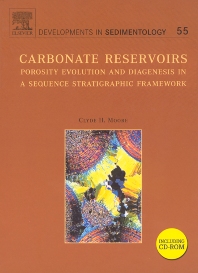Books in Geochemistry and petrology
Books in Geochemistry and petrology
- 1st Edition
- Volume 65
- October 15, 2001
- R.E. Zeebe + 1 more
- English
- Paperback9 7 8 0 4 4 4 5 0 9 4 6 8

CO2 in Seawater: Equilibrium, Kinetics, Isotopes
- 1st Edition
- July 12, 2001
- Ernst-Detlef Schulze + 6 more
- English
- Hardback9 7 8 0 1 2 6 3 1 2 6 0 7
- eBook9 7 8 0 0 8 0 5 0 7 4 0 8

Global Biogeochemical Cycles in the Climate System
- 1st Edition
- Volume 10
- June 6, 2001
- O.J. Martinsen + 1 more
- English
- eBook9 7 8 0 0 8 0 5 4 0 8 5 6

Sedimentary Environments Offshore Norway-Palaeozoic to Recent
- 1st Edition
- Volume 55
- May 23, 2001
- Clyde H. Moore
- English
- Hardback9 7 8 0 4 4 4 5 0 8 3 8 6
- eBook9 7 8 0 0 8 0 5 2 8 5 7 1

Carbonate Reservoirs: Porosity, Evolution and Diagenesis in a Sequence Stratigraphic Framework
- 1st Edition
- Volume 9
- July 7, 2000
- K. Ofstad + 2 more
- English
- eBook9 7 8 0 0 8 0 5 3 4 5 9 6

Improving the Exploration Process by Learning from the Past
- 1st Edition
- Volume 7
- April 13, 2000
- M. Hale
- English
- eBook9 7 8 0 0 8 0 5 3 2 4 2 4

Geochemical Remote Sensing of the Sub-Surface
- 1st Edition
- November 24, 1999
- E. Savazzi + 1 more
- English
- eBook9 7 8 0 0 8 0 5 2 7 6 1 1

Aspects of Multivariate Statistical Analysis in Geology
- 1st Edition
- October 15, 1999
- Haraldur Sigurdsson + 4 more
- English
- eBook9 7 8 0 0 8 0 5 4 7 9 8 5

Encyclopedia of Volcanoes
- 1st Edition
- May 14, 1999
- Lev Knoring + 2 more
- English
- eBook9 7 8 0 0 8 0 5 1 7 8 4 1

Strategies for Optimizing Petroleum Exploration:
- 1st Edition
- January 11, 1999
- C. Kendall + 1 more
- English
- Paperback9 7 8 0 4 4 4 5 0 1 5 5 4
- eBook9 7 8 0 0 8 0 9 2 9 1 5 6
